Hannah Robson is an artist who uses a range of weaving techniques and materials to create fabrics and three-dimensional installations and sculptures. She is interested in the spatial qualities of textiles: how they can affect and form space, change atmospheres, and filter and reflect light.
Court Spencer went to see Hannah in her studio to see what she’s working on.
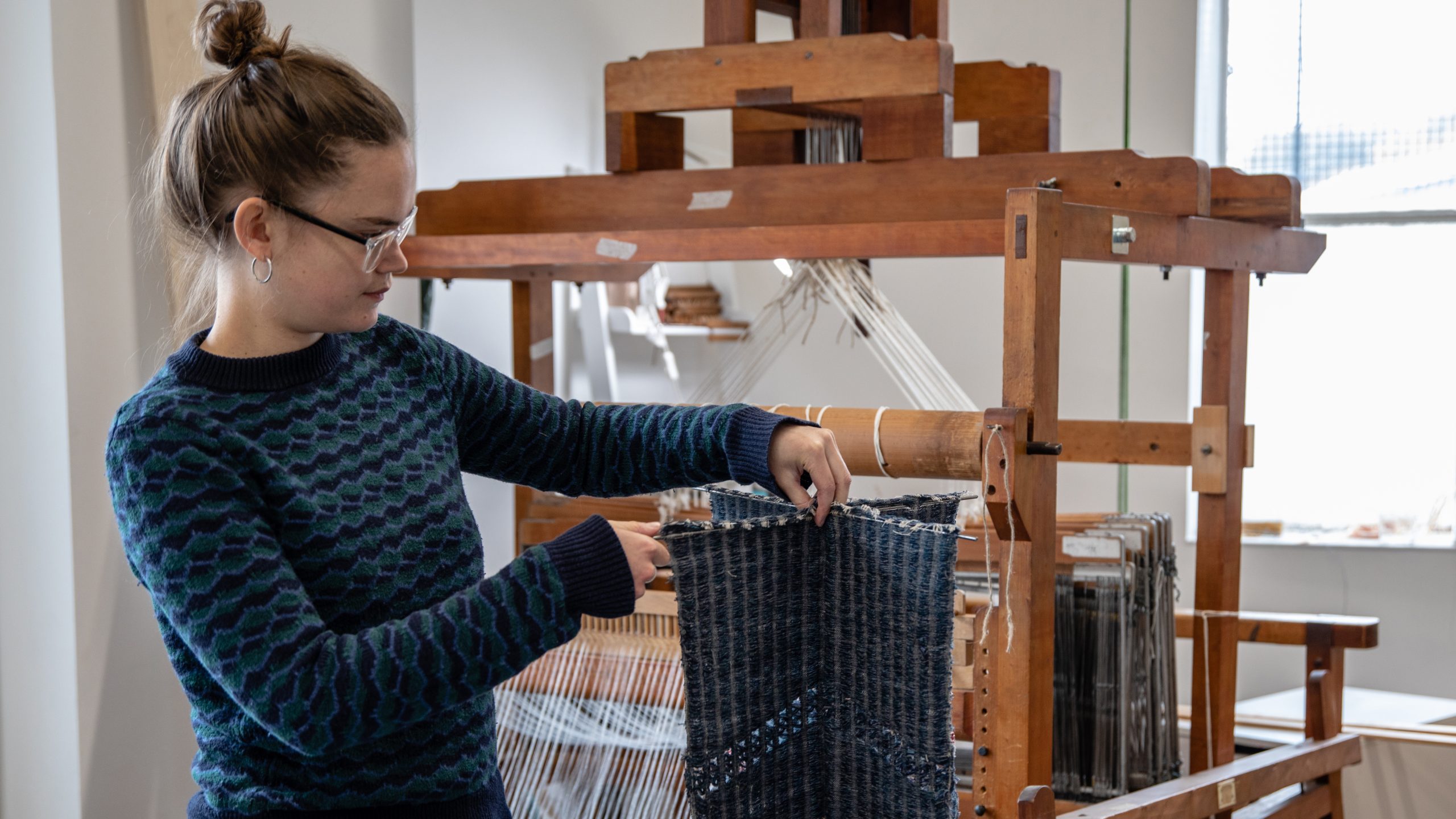
Hannah in the studio with a piece of her work (Photo Credit: Lucy Forrester)
Court: Thank you so much for your time. Can you please kick things off by telling us a little about your studio, how many people are based here, how long you’ve been here etc?
Hannah: Thanks for your interest in my work and studio! I’m here in based at Scott Hall Mills, which is run by Lord Whitney and the building is full of people making things – artists, makers, jewellers, printers, set designers, musicians, film makers, producers. I love being part of the mix. I’ve been here since 2019, it took me ages to find a space tall enough to accommodate my big (and sometimes loud) loom. Scott Hall Mills is somewhere I can clatter around.
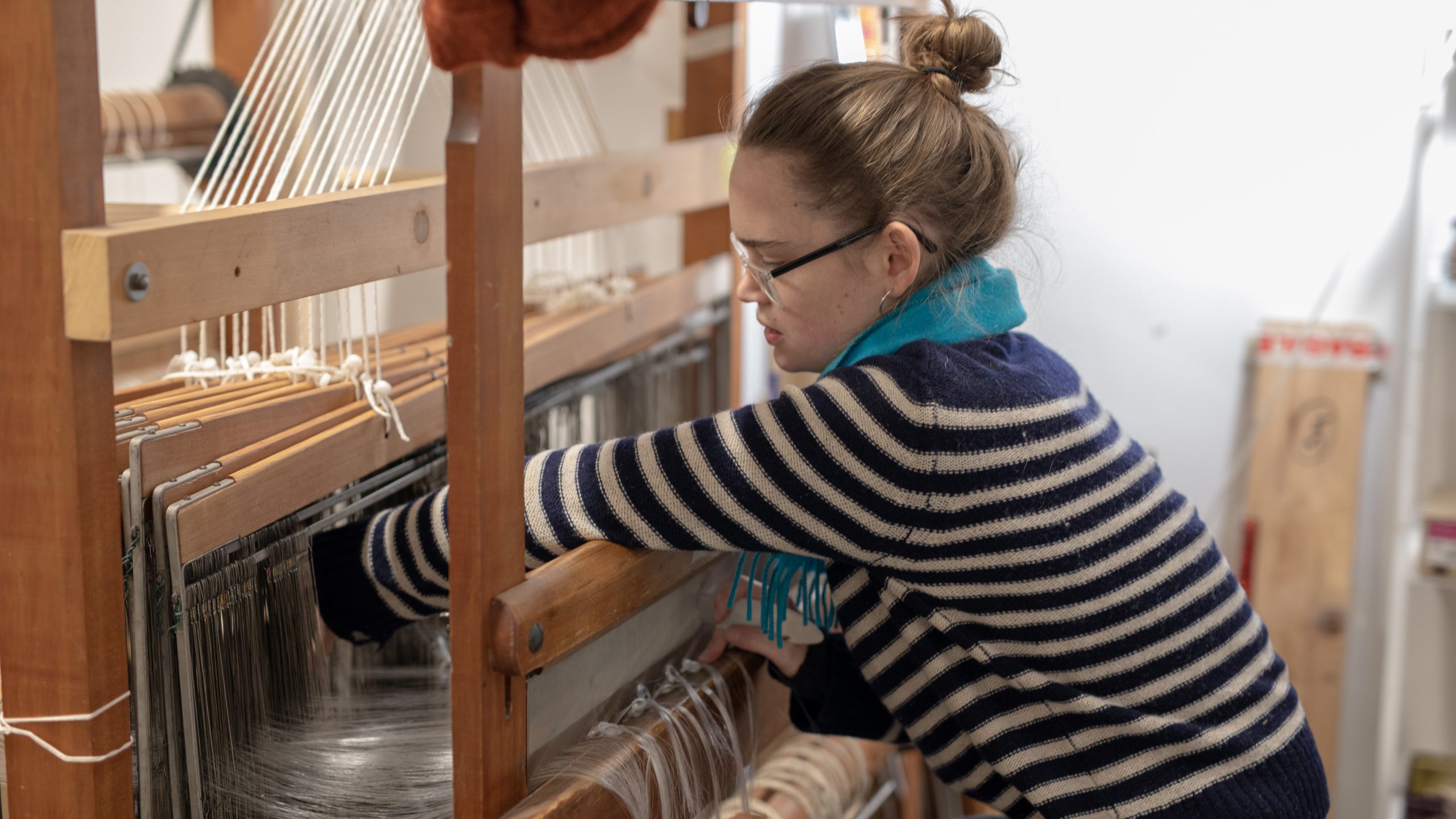
Hannah in the studio threading the loom (Photo Credit: Lucy Forrester)
Court: And obviously, it’s freezing at the moment. So how does that impact your weaving?
Hannah: Weave fast to stay warm. In winter, I tend to use the studio only for actual weaving. Everything else, drawing, planning, emails, etc. all happens in warmer places. I like knowing that when I’m in the studio that I’m not going to be on my laptop – I’m just going to weave.
Court: That makes complete sense! When did you get into textiles, and was it always specifically weaving or was that something you came to whilst you were studying?
Hannah: I was taught to sew by my mum, she is an upholsterer and we have a shared love of textiles. As a teenager I worked in a couturier as a Saturday job – I loved being a world of making and colour and pattern. I also learned a lot about running a small business, about being professional as well as about how materials move on the body.
I studied Fashion and Textile Design at Winchester School of Art. At the beginning of the course we were introduced to printing, knitting, weaving and pattern cutting, but we had to specialise within the first six weeks. I found weaving to be magical, there’s so much logic and technical rigour to the process but always surprises. You don’t fully know how materials, colours and textures will respond until you try them. I still find it magical how the loom brings together hundreds of tiny lines of thread into one continuous cloth.
I was fortunate I ended up on a course that introduced me to weaving – everything has just followed on from that point.
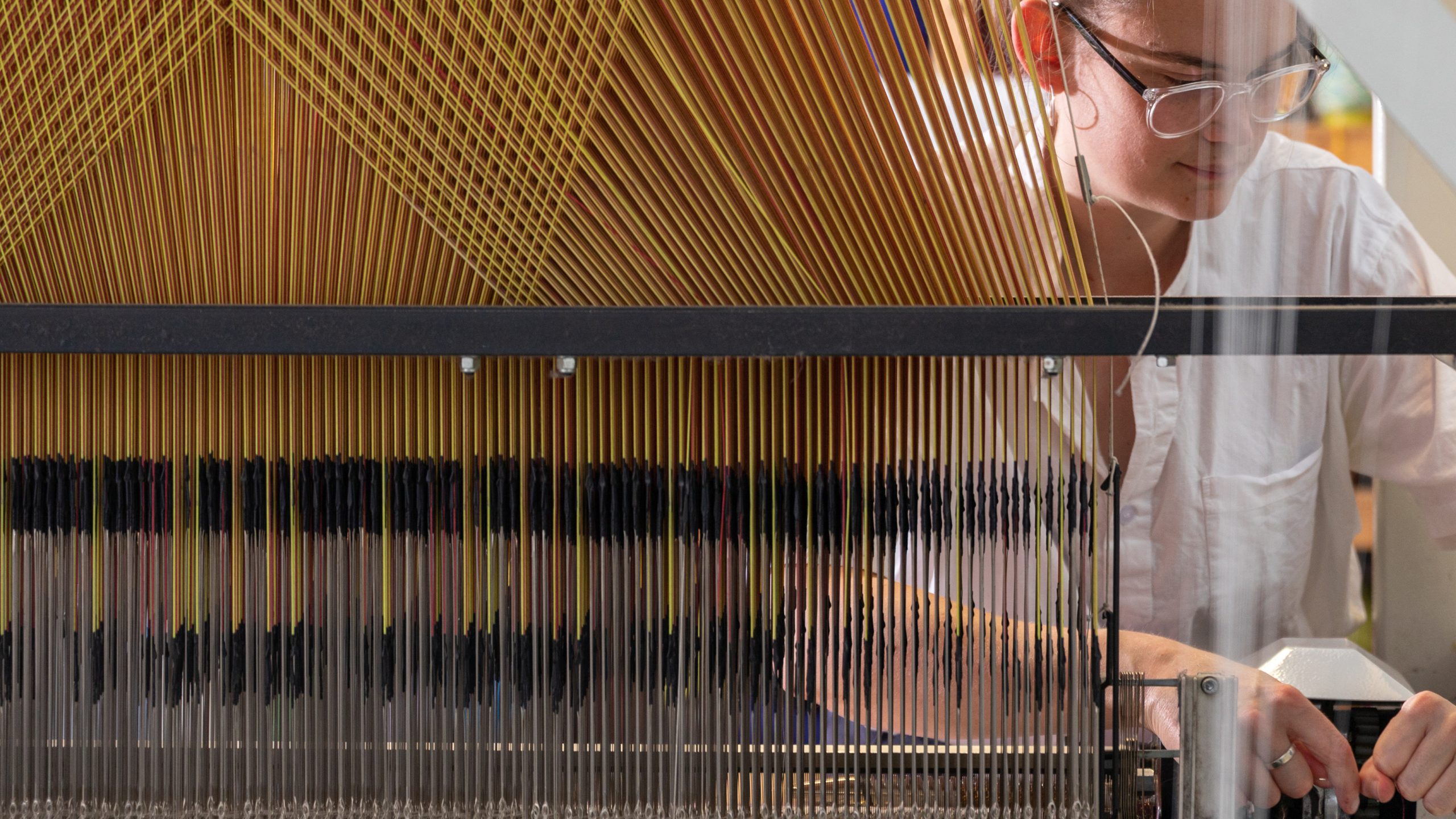
Hannah working on the jacquard loom (Photo Credit: Lucy Forrester)
Court: It really is magical. Even the process of weaving is like an installation or performance without taking into account the finished piece. And then how did you make the move to lecture at Bradford College?
Hannah: I was lucky to be offered a role as Lecturer about a year after graduating from the Royal College of Art. I remember feeling a bit of a fraud at the beginning. But around the same time, I was starting to get interesting freelance work and commissions. Looking back, teaching and my studio work have continuously fed each other over time. I get as much out of the sharing and the creative buzz of the students. It’s great to see how everyone responds to projects individually and that there is no single right way to do a project. I love witnessing how things unfold differently every term.
Court: A few years ago, you were awarded DYCP funding for your Jacquard Project. Can you please talk a bit about how that started?
Hannah: Jacquard is a special kind of weaving loom for creating complex or graphic patterns in the cloth. The project is directly linked to my role at Bradford College. When I first started, I was teaching jacquard design to students on the BA course. But by 2021, the loom was not being used by students and no longer included in the curriculum. I could see that if nothing was done, the loom would be idle and eventually be scrapped. So, I was determined to give it a new lease of life. I thought it would be a question of getting some training on how to operate an industrial machine, but in the process, I discovered that parts needed replacing or servicing. Along the way, I met some brilliant, generous people from the local industry who have helped me get things going again, and who have shown me the ropes, many had studied at Bradford College during their own training.
I was conscious that jacquard looms are hard to access for those who want to do small-scale projects. They are mostly found in mills, and are used for manufacturing. I was interested to see how it could be used by people from a range of different creative perspectives. So, the funding also allowed me to undertake four collaborations, and each person came from a different discipline or had a different relationship to textiles. I had so much fun working with Jodie Posen, Anna Ray, Alice Chandler and James Thompson.
It was a wonderful opportunity to open my practice to industrial weaving processes and joyful creative collaboration. We made some really varied and lovely work and each collaboration feels like it will continue in one form or another.
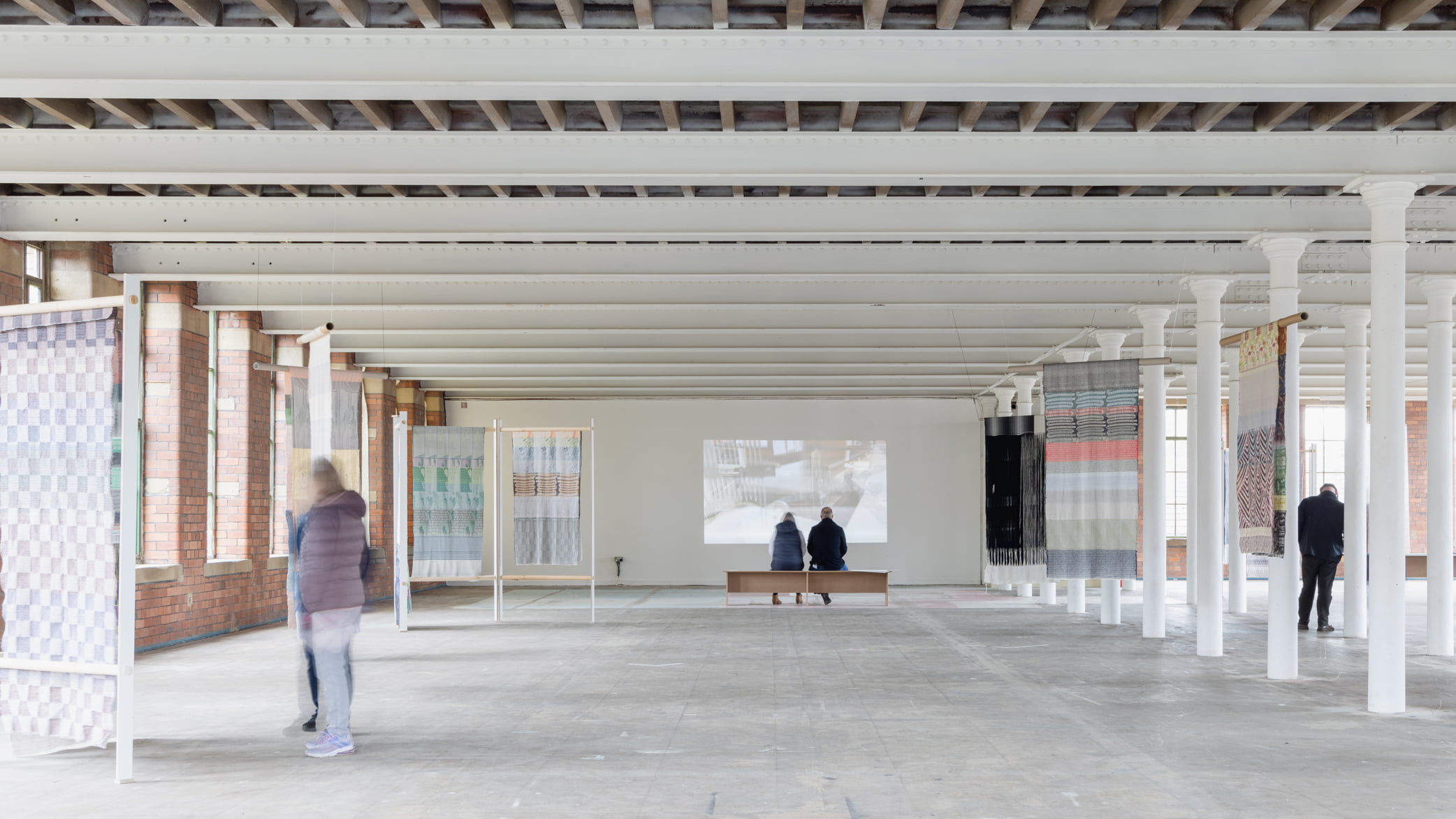
The Jacquard Project installation shot (Photo Credit: Lucy Forrester)
Court: Your Jacquard Project exhibition was one of my favourite shows of 2023. I’ve still got my little hand-wrapped piece of card at home! What were some of the key achievements in that project?
Hannah: Ahh! That’s so wonderful to hear! I’m so pleased you still have your yarn wrapping. I fondly remember you spending a long time hanging out with me and the yarns and the other visitors who participated. The drop-in workshop was one of the most successful things about the show. It allowed visitors to handle yarns, and enjoy the colours and textures, which I think helps to understand the work on display – and an activity gives people an excuse to stay a little longer.
The exhibition was a big deal for me. It was a celebration of everything that went into the DYCP project, all the collaborations, the learning and all the fabrics. It ended up being a big exhibition, both in terms of the volume of work presented, curating numerous collaborative projects, and the size of the physical space. It was presented in the 1912 Building at Sunny Bank Mills. It’s a dreamy space, steeped in textile history. I was pleased that the space and the work seemed to enhance each other.
I spent a long time developing the graphic design for the show, the labels, the accompanying booklet and handouts, and working with my partner to design the display methods, the special hanging frames and tables which occupied the space but could be easily stored afterwards.
I really went all in for an exhibition which lasted 5 days but I think the work deserved to be presented and celebrated. And I believe in doing things 1000%. That’s how you learn and improve for the next project.
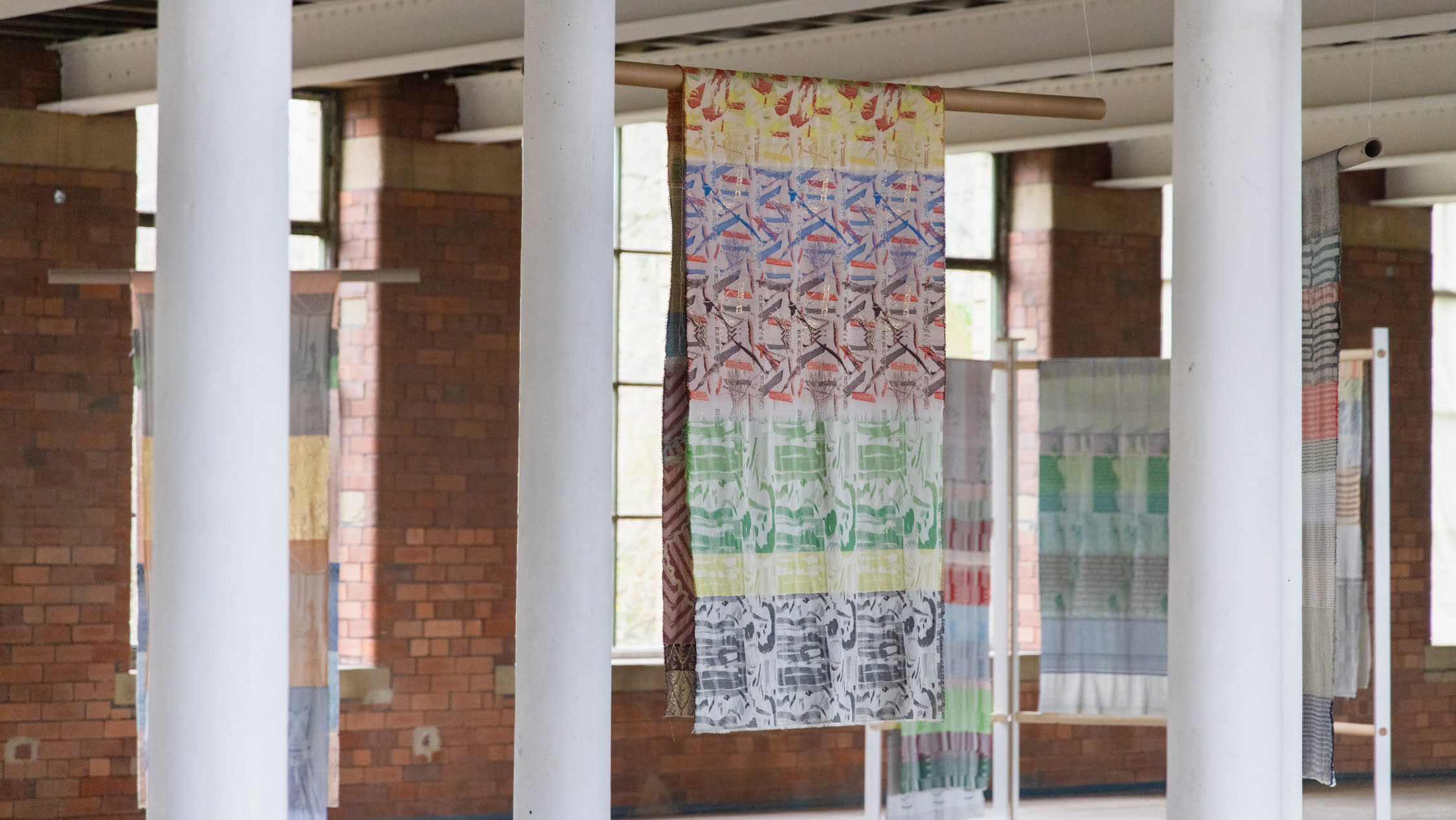
The Jacquard Project installation shot (Photo Credit: Lucy Forrester)
Court: Your attention to detail for the show was impressive, the whole thing was beautifully delivered. As with all art projects, they don’t really end but instead, provide a platform for new projects and developments to come from. What has come from that project and what are you working on at the moment?
Hannah: Exactly! Since then I’ve been running one-day workshops in jacquard weaving, which caters both to textile specialists and total beginners. They’ve been really fun, I’ve had some great mixes of people join those sessions.
I’ve also been doing developments and weaving for creatives who have projects which are too small to go into a mill environment. So that’s been exciting to give other people some space to weave
I’m developing projects for 2024 which will use jacquard weaving for quite large-scale artworks. It’s really opened up what’s possible in my practice so watch this space to see what happens!
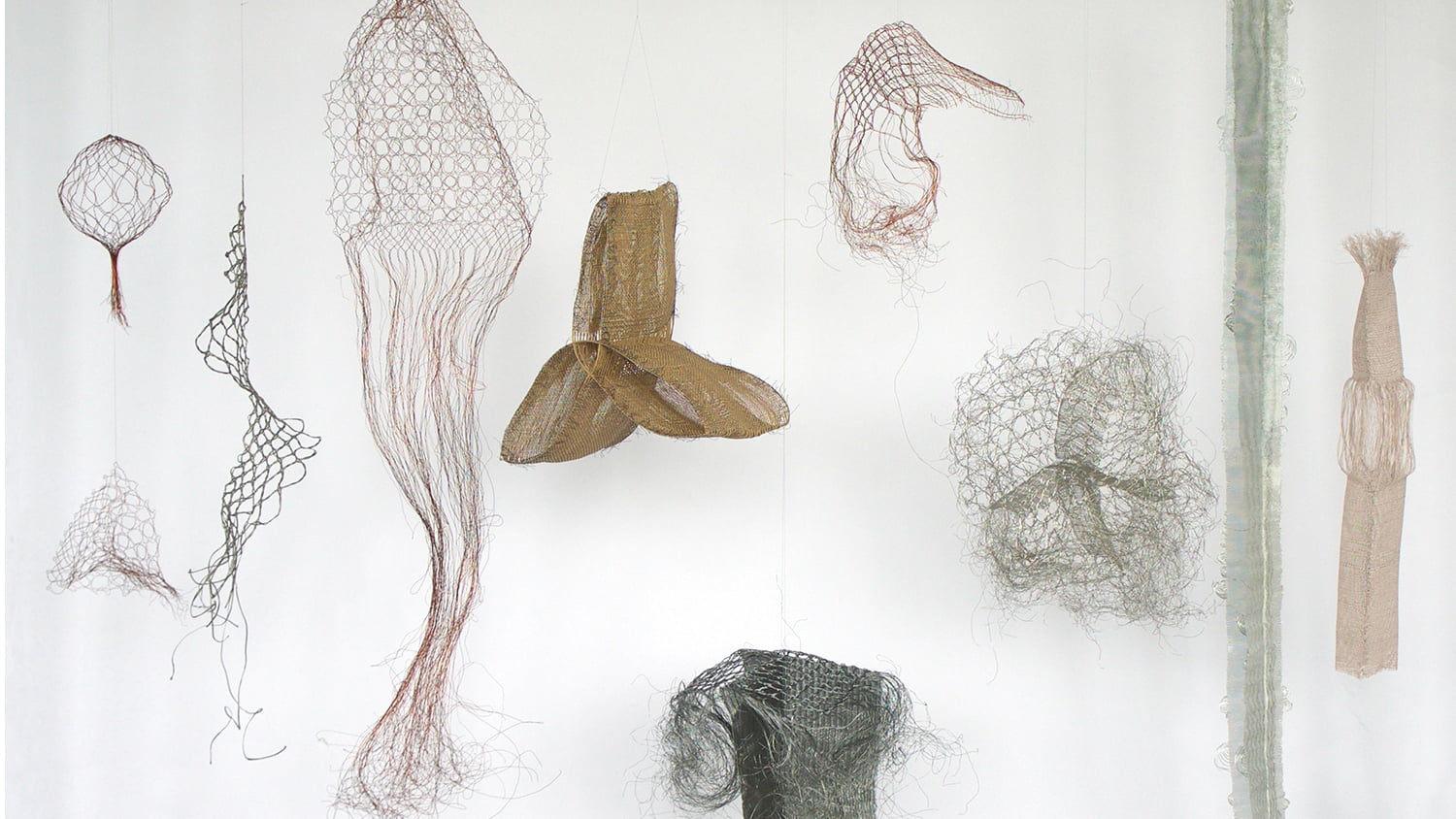
Sculptural pieces of weaving by Hannah Robson.
Court: That’s so nice to be able to share the jacquard process with those who aren’t working on the scale a mill would require. I feel like your work challenges what people might associate with woven textiles. You use materials such as threads and silks etc but you also weave with metal wire and paper. Can you tell us a bit about your choice of materials?
Hannah: Exploring materials on the loom is one of my most favourite things. I can happily sample and experiment for days and weeks without a fixed outcome. I would say there are a few underlying guiding interests in my practice. Firstly – the interaction between light and materials, reflection, shadows and translucency. Secondly – the interaction between textile and architectural space. And thirdly – seeking to develop three-dimensional forms using textile processes.
These interests have led to exploring unconventional materials as I seek to achieve sculptural qualities. So, I am drawn to transparent, shiny, strong and stiff materials. I’ve done a lot of work using wire. Recently I’ve been obsessed with paper yarns as they seem to catch and transmit light, and being light-weight as well as structural, they enable me to make self-supporting 3D forms.
Sometimes I wonder if I should have studied sculpture. But there’s something about the softness of woven textiles which is important in the work, even in my most brutal woven stainless-steel sculptures.
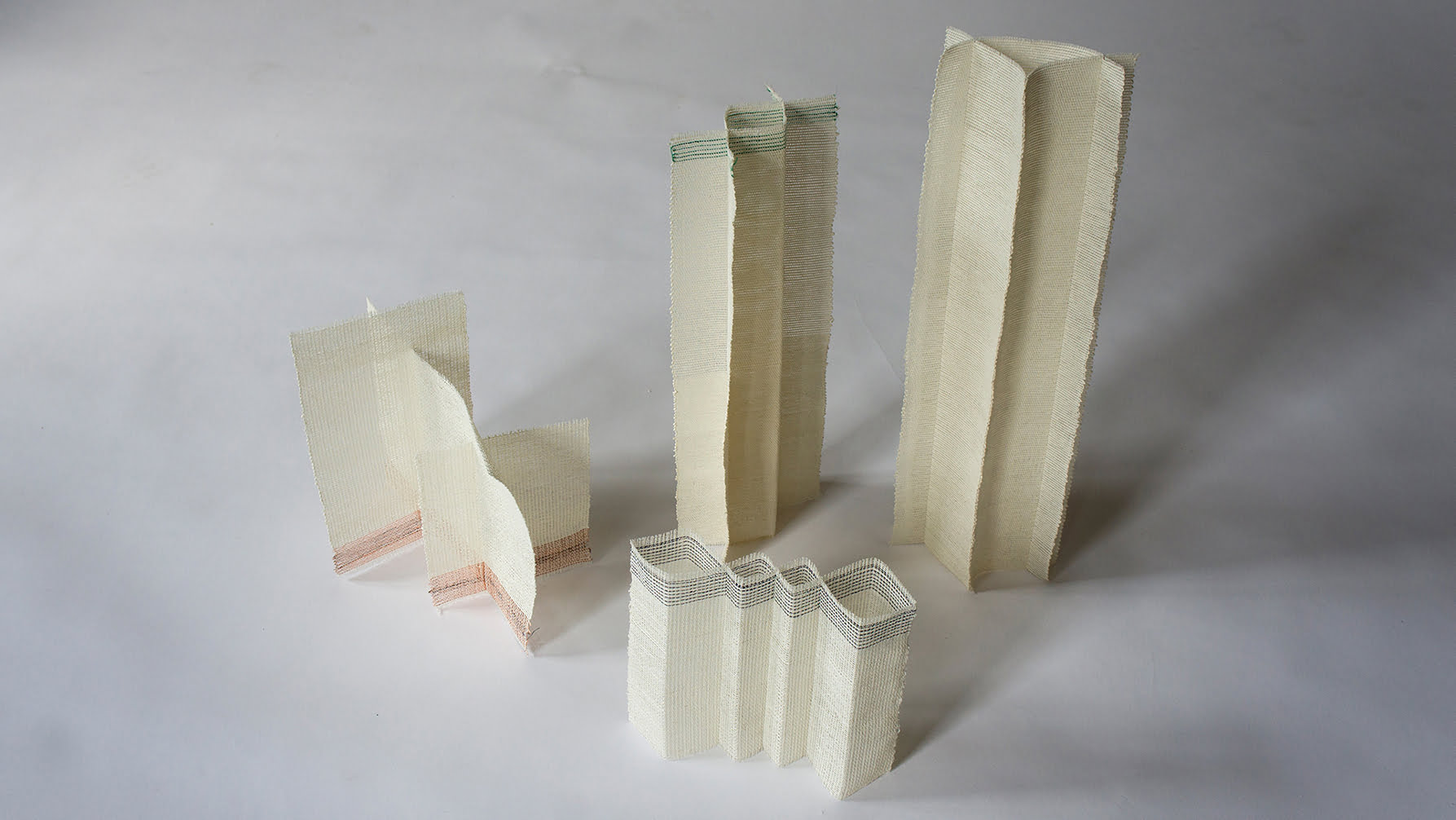
Some of Hannah’s work with hinged joints that are woven into the self-supporting pieces.
Court: All of the materials have their own qualities that you’re able to work with for different results. I don’t know a great deal about weaving but the way you create self-supporting structures with hinged joints is very different to what I assume when someone says that they weave. Is this something you’ve been taught or is it something you’ve developed?
Hannah: It’s something I’ve been developing since I was a student. I have a very technical mind and the three-dimensional thinking it requires comes very naturally to me. I can’t really explain it, but I do know that each piece builds on the one before and I think of textiles as being inherently three-dimensional.
I’m always trying to push the technical aspects of weaving, the programming of the loom and the rigour of the construction. I really enjoy the combination of technical challenges with hand manipulation and experimentation.
Court: What would you say has been your career highlight thus far?
Hannah: There are all sorts of magical moments which feel like highlights. Like being able to visit Kettle’s Yard after sunset when I was showing work there. Showing work with Make Hauser and Wirth has been hugely exciting – they have such a beautiful gallery in Somerset. And I always have a wonderful time working with Sunny Bank Mills!
Honestly, whenever anyone wants to buy or commission a piece I have to pinch myself. The highlights are always about moments of connection with visitors, with other artists or kindred spirits.
Court: Working with Kettle’s Yard and Hauser and Wirth are some pretty impressive highlights. And I love that you also go back to that sense of connection which I can totally relate to. And do you have a dream project that you would love to make happen?
Hannah: I’ve been making work at ever-increasing scale. I would love for that to continue. The dream commission would be to create a woven installation for the Serpentine Pavilion one day!
Court: That will be incredible! Let’s throw it out there and make it happen! What’s the best way for people to keep an eye on your work and what you’re up to?
Hannah: My recently re-jigged website is hannah-robson.com And instant updates on Instagram: _.hannah_robson
Court: That’s fab! Thank you so much for your time. It’s always a joy to see your work and get the chance to talk to you about it. I can’t wait to see what you do in 2024!
Filed under: Art & Photography
Tagged with: art, artist, Arts Council England, creativity, emerging artist, exhibition, experimentation, funding, Jacquard, leeds, loom, practice, professional artist, Scott Hall Mills, Sunny Bank MIlls, weave, weaving, yorkshire
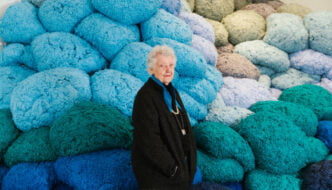
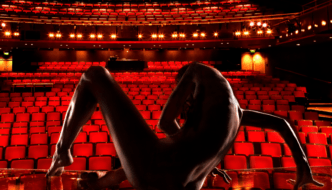
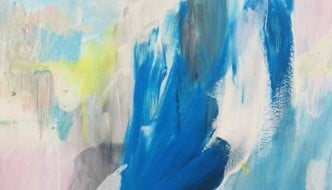
Comments